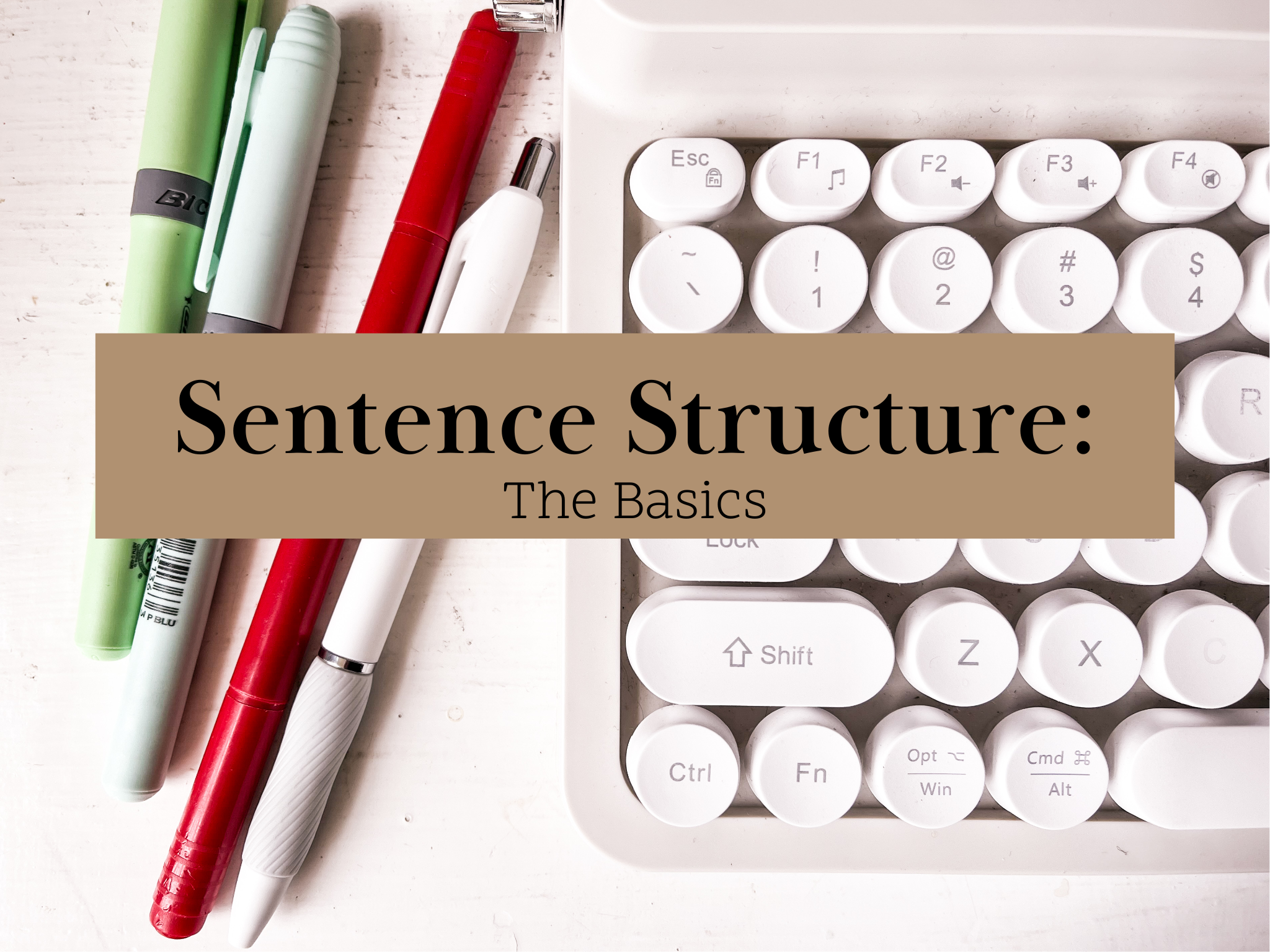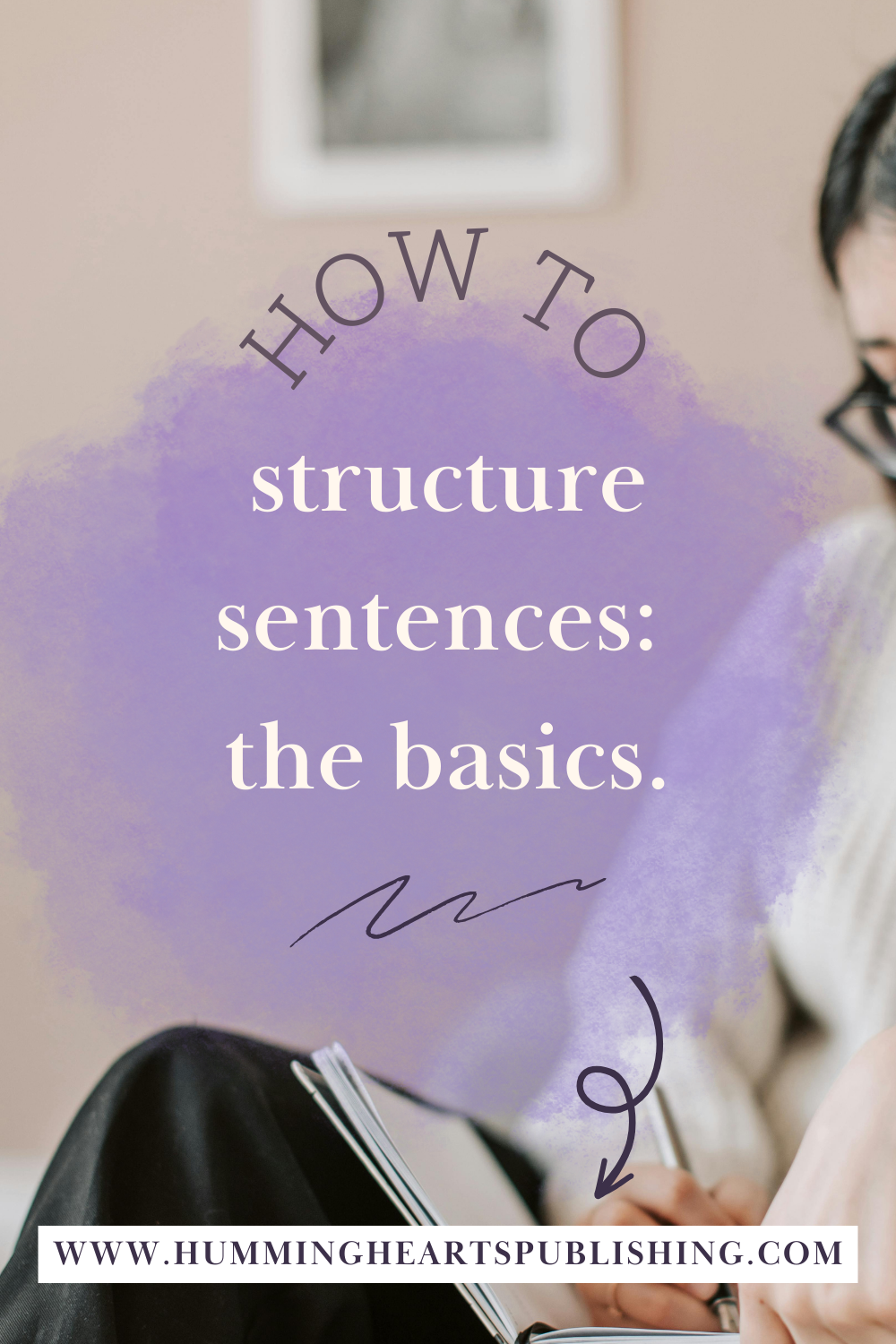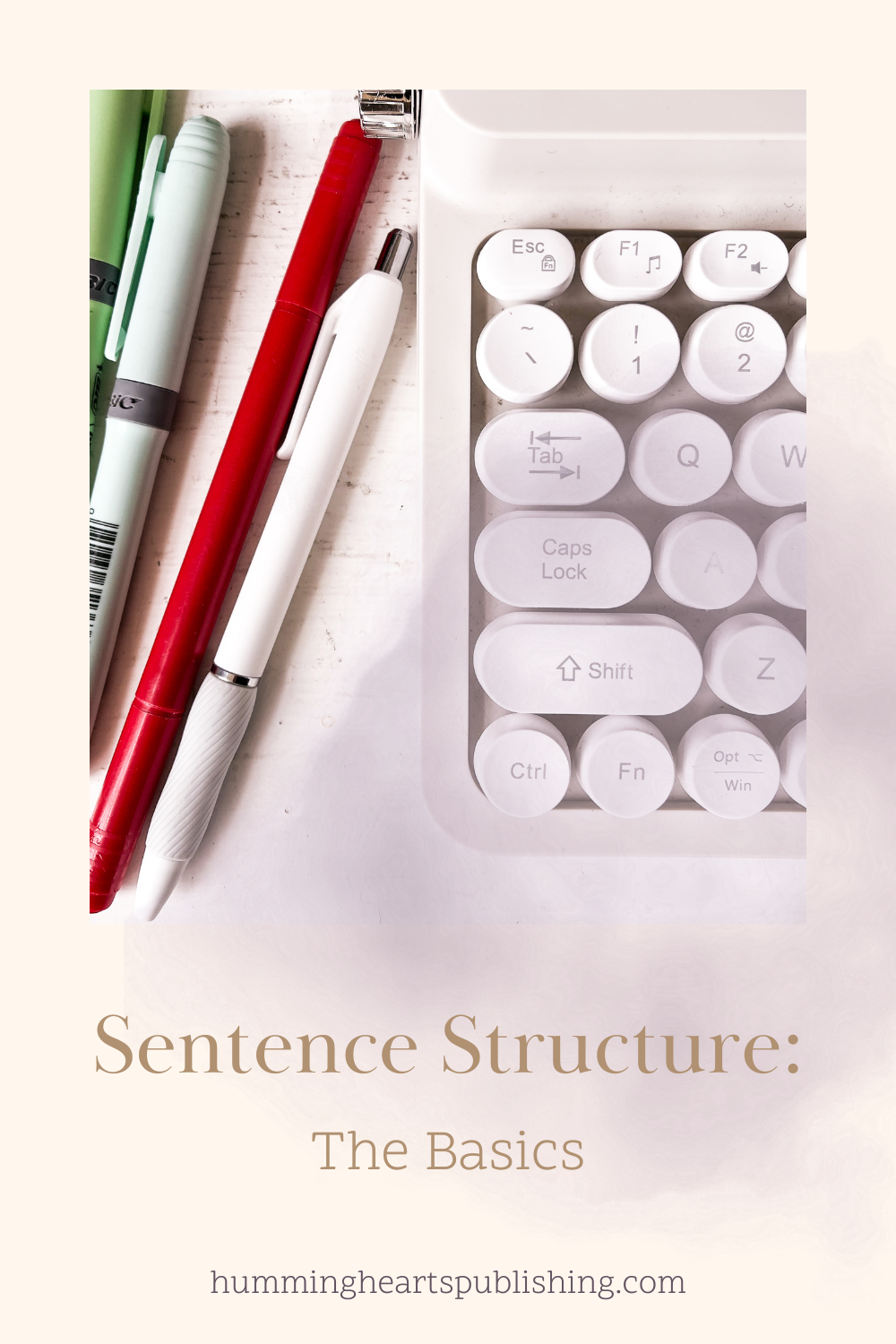How to Structure Sentences: The Basics
Having powerful sentence structure can be the reason your reader stays up all night reading the book, or why they are mesmerized by your film. Not only is the story enchanting, but the delivery— the pacing hooks them. Understanding sentence structure is a fundamental tool every storyteller must utilize when writing—especially in books. In part one of this sentence structure series, we are covering the basics of constructing a sentence. We are sharing tools to help you understand what sentences consist of, so you can create powerful prose.
In this series on sentence structure, we are going to explain what it is, share examples from various books and screenplays, then show you how to implement it into your writing. This is a four-part series, so be sure you’re subscribed to our newsletter (below) so you don’t miss a single article.
Disclaimer: This post may include affiliate links. If you purchase through my link, I will receive a small commission at no additional cost to you. See my full disclosure policy, here.
What is a sentence composed of?
Before we get into the fun part, we have to go over the basics. Let’s discuss what a sentence is made up of and how to write them.
Every sentence contains a subject and a verb. The exception is only if you’re writing commands. Ex: Go! Stop!
Here’s the most basic breakdown of a complete sentence:
Ex: He ran.
The subject is he and the verb is ran. This is a complete sentence.
A sentence like this can enhance pacing. However, sentences are often made up of more parts than this. We’ll give you a quick breakdown of the four different types of sentences below.
But first, you’ll need to familiarize yourself with these terms:
Clause: A bundle of words that contain a subject and a verb. They can be complete sentences or incomplete sentences.
Independent clause: A complete sentence that can stand alone.
Ex: She ate apples.
Dependent clause (or subordinate clause): An incomplete sentence that needs help from an independent clause because it doesn’t express a complete thought.
Ex: Although she wanted to leave the restaurant
Coordinating conjunction: A conjunction is placed between clauses, often referred to as: FANBOYS. These words consist of: for, and, nor, but, or, yet, so.
Subordinating conjunction: A conjunction that signals the relationships of time or place. These conjunctions are: once, while, that, when, where, before, after, etc.
Understanding how these clauses and conjunctions work, and the proper grammatical usage around them, make for an unstoppable storyteller. You’ll begin to wield words in a variety of ways that make your prose powerful to any reader.
Hemingway was a master of compelling pacing, making his books digestible and fast-paced. Join us in the next article to see a few examples of powerful sentences within his books, and various other authors.
Don’t miss out on what’s coming next. Sign up for our newsletter, so you never miss a new blog post!
The four types of sentence structures:
Simple
Compound
Complex
Compound-Complex
These are the four basic structures that make up sentences. Mixing them together to make up a story is where the magic comes in. So, let’s see what these sentences are made of.
Simple: One independent clause
She snickered.
2. Compound: Two or more independent clauses.
Maribel wanted more food; she cried until her mom gave her a banana.
3. Complex: One independent clause + one or more dependent clauses.
Lisa wanted to go to the concert yesterday, but it rained all day.
4. Compound-Complex: Two or more independent clauses + one or more dependent clauses.
Joseph couldn’t help it; he laughed until his sides hurt anytime he was around Kat, she always knew how to bring it out of him.
Practice crafting sentences:
Now that you have the key components of sentence structure, you get to play around and mix them together. This is where the fun happens; when you get to be free with your creative expression.
You get to impact the movement of a story within each sentence—each word. That is what makes a master storyteller. It’s about taking the reader on a journey. Of course, your themes and characters will do this as well, but what makes the impact most poignant are the rhythms of that exploration.
The more you sink these key elements of sentence structure into your bones, the words will flow naturally. Don’t feel discouraged if writing feels difficult at first—everything takes practice.
Up Next:
Join us for part two in this sentence structure series. We are going to share how these tools have been used for generations in various books. The best way to learn (outside of practicing) is from the masters before you, those who crafted the stories we all know and love.
We are going to explore the impact sentence structure has for each selected story.
Are you ready to see how these tools are applied in published books? Subscribe to our newsletter and be the first to know when the next article is live.




